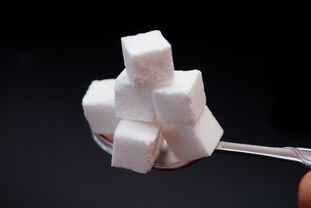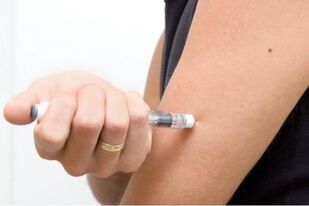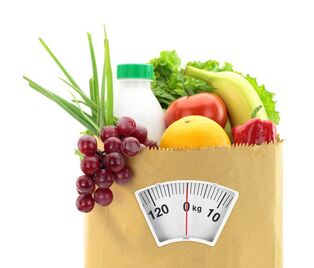
Diabetes is a chronic disease characterized by metabolic disorders due to absolute or relative lack of insulin. The pancreas is the only organ, weighing 70-100 grams, located in the abdominal cavity of the duodenal arch. It plays a key role in the digestion of protein, fat and carbohydrates. It also produces insulin, which regulates carbohydrate metabolism in the body. In this article, we will discuss what nutrients should be included in diabetes.
Types of diabetes
The doctor will distinguish several types of diabetes according to the cause and course of the disease:
- Type I diabetes, insulin dependence;
- Type II diabetes usually occurs in later life, especially in obese patients.
Type I diabetes is usually caused by damage to the pancreas. In other words, the primary damage of β cells (those that produce insulin in the pancreas) and the absolute lack of insulin secretion.
The initial symptoms of Type I diabetes are thirst and hunger, unexplained weight loss, frequent urination, large amounts of urine, blurred vision, fatigue, and chronic infection. In some cases, seizures are accompanied by convulsions, confusion, slurred speech, and loss of consciousness. Type I diabetes is considered an immune disease.
Type II diabetes is more common in obese people. The disease can be congenital or acquired and is characterized by decreased insulin secretion from the pancreas and insulin resistance. This means that even the right amount of insulin in the body cannot complete the task.
The disease is accompanied by thirst and heavy urination, and blood sugar levels rise slowly. The patient felt weak and sleepy. The disease usually starts in middle-aged and elderly people. However, in recent years, the number of young patients with type II diabetes has increased dramatically. And there are an alarming number of overweight and obese children and adolescents.
What is high blood sugar

Hyperglycemia-blood sugar levels are higher than normal. Symptoms of hyperglycemia include thirst, dry mouth, frequent urination, weight loss, and excessive daytime sleepiness.
The most common cause of high blood sugar is undiagnosed or poorly controlled diabetes. In diabetic patients, this condition may be caused by insufficient insulin.
Hyperglycemia is rarely the result of infectious and endocrine diseases (acromegaly, Cushing’s syndrome). The risk of late complications is high, especially in the cardiovascular system.
Chronic hyperglycemia is related to the dysfunction and dysfunction of various organs (eyes, kidneys, nerves, heart and blood vessels).
Proper nutrition for diabetes
In the prevention of diabetes, diet is a very important part of treatment. It is necessary to maintain proper blood glucose and lipid levels and optimal blood pressure. A well-chosen diet can reduce the risk of diabetes complications and minimize the risk of vascular disease. Appropriate diabetic diet plays an important role in the prevention and treatment of chronic complications of diabetes. Including microvascular complications, retinopathy, nephropathy, diabetic neuropathy, etc.
Dietary diabetes is one of the main factors affecting the prognosis of diabetes.
Sugar is vital to life, but in this case, it’s best to remove the sugar bowl! In diabetes, the metabolism of carbohydrates is mainly impaired. People diagnosed with diabetes should limit their sugar or carbohydrate intake.

Sugar:
- Monosaccharides-fruits and honey contain glucose and fructose;
- Sucrose disaccharide is the sugar in the sugar bowl.
- Polysaccharides-flour products, cakes, biscuits and breads, potatoes, bananas, noodles, dumplings, pasta, pancakes, etc.
Diabetes carbohydrates
Carbohydrates are part of our diet. Their consumption should account for 55-60% of total demand. Much depends on the form and structure of the carbohydrate source. Carbohydrates in the digestive tract are digested and broken down into simple sugars-mainly glucose.
Please note that excessive carbohydrates will continue to stimulate the β cells in the pancreas to produce and secrete insulin.
As our sugar levels increase, our pancreas secretes insulin. Insulin is a hormone that allows glucose to enter cells. Like glucose, simple sugars are quickly transported into cells in about an hour.
Unfortunately, insulin is a hormone that lasts for hours and does not like "not working". Therefore, elevated insulin levels cause fluctuations in blood sugar levels and carbohydrate hunger.
Hungry people open the refrigerator and start eating to satisfy this hunger. The adrenal glands receive information: blood sugar fluctuations. All these responses are signals from the adrenal glands to secrete adrenaline. This creates a vicious circle, leading to stress, depression and autonomic neurosis (neurasthenia).
Therefore, it is recommended to reduce carbohydrate intake to a minimum. In this case, fluctuations in blood glucose levels and excessive production of the hormones insulin and adrenaline will not occur.

Glucose passes through the wall of the digestive tract and enters various organs with the blood, where it is converted and becomes a source of energy. If there is not enough exercise, energy requirements will be reduced, and glucose will be stored in the muscle and liver in the form of glycogen.
When excessive, glycogen will be converted into fat, leading to fatty liver and further accumulation of excess fat in the body. The metabolism of glucose is controlled by insulin, which is a hormone produced in the pancreas.
As the main energy substance, carbohydrates can enter cells only with the help of insulin, which distributes simple sugars in the body. However, for example, insufficient insulin can cause an increase in blood sugar levels, which in turn causes severe cellular metabolism. A general lack of insulin can cause diabetes-type I diabetes in children and young people.
Proteins for diabetic patients
Protein should meet 10-15% of energy requirements. Children during the reproductive period, pregnant women need large amounts. The most valuable animal protein is found in lean meat, cheese, eggs and yogurt.
Since the human body can produce 56 grams of sugar per 100 grams of protein, it is also important to limit protein intake. In order not to harm your body, you need to eat high-quality protein (egg yolk, internal organs). The source of vegetable protein is black bread made from soybeans, beans, and whole wheat flour.
Diabetes eating habits
In the diabetic diet, in the first stage of treatment, there should be foods such as egg yolks, butter, sour cream, milk and unsweetened vegetables.
At this time, should be greatly reduced or eliminated from the diet: egg whites, lean meat, fish, poultry and nuts.
Diabetics should not eat meals or consume high-protein foods at night. At night, the body cannot use it. Since the pancreas cannot release enough insulin, blood sugar levels in the morning will rise. In this case, it is recommended that dinner be based on carbohydrates and fats.
Fat contains the most energy. They can only cover 30% of daily energy consumption. In excess, they contribute to the development of obesity.
Spices such as cinnamon, garlic, cloves, turmeric and bay leaf can lower cholesterol and blood sugar levels.
Can people with diabetes eat fruits and vegetables? Yes, because they are a rich source of vitamins and minerals. Fresh vegetables including broccoli are ideal chromium for diabetics and an important source of chromium. Onions that release insulin. Peeled potatoes (boiled potatoes raise blood sugar too quickly), asparagus, raw carrots, fresh cucumbers, sauerkraut, elderberry leaf and stem tea, and garlic.

Vegetables you can eat without restriction:
- tomatoes;
- Fresh and pickled cucumbers;
- raw and sauerkraut;
- Chicory;
- Kohlrabi;
- Turnip
- Chili powder;
- Lettuce
- Mushroom;
- Zucchini.
An excellent anti-diabetic medicine-fresh blueberry leaves, harvested before the fruit is ripe. Blueberries can prevent diabetic retinopathy-studies have shown that the vision of people with eye diseases during diabetes has improved significantly. This disease can cause changes in the fundus of the eye, which can severely damage the blood flow to the eye.
It is recommended that people with diabetes who are overweight (body mass index over 25) limit calorie intake to reduce weight.
Food Glycemic Index
Blood sugar is not only affected by the number of carbohydrates, but also by its type. Therefore, it is necessary to control the quantity and quality of carbohydrates in the diet, but also to calculate the glycemic index of the product.
Low gastrointestinal foods are digested and absorbed slowly, do not raise blood sugar rapidly, and do not stimulate insulin secretion. A low GI diet reduces the risk of insulin-dependent diabetes.The higher the GI value of a food, the higher the blood sugar level after eating the food. Foods high in the gastrointestinal tract increase blood sugar. After eating low-GI foods, the absorption is slow, and the blood sugar gradually increases and decreases, which helps to control the blood sugar of diabetic patients. It is best to eat foods with a GI less than 60.
When eaten in its natural form (i. e. unprocessed and unprocessed), the GI of the food is significantly reduced.
It is also recommended for diabetics to abstain from alcohol.














































































